 |
|

|
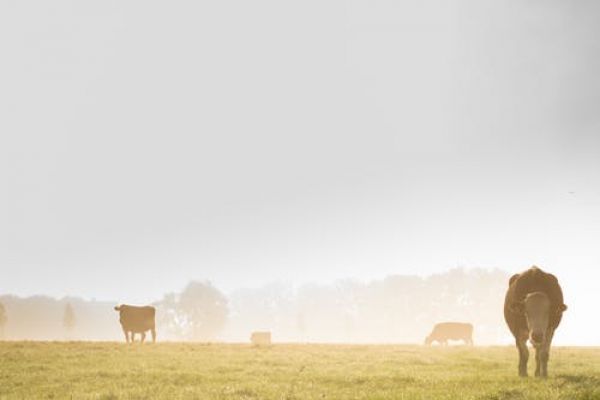 |
 |
August Large Animal News |
August 2019 |
 |
|
 |
There's a lot happening at Orange Vet Hospital this month!
We farewelled vet Megan Wright mid August - Megan has headed off to pursue new challenges & to develop her veterinary career & skills further. OVH is delighted to have been the first step in that career - best of luck Megan.
Megan's departure left us with the need to fill her boots and we are delighted to welcome Ryan Lane to the Practice in early September. Ryan, a 2019 Charles Sturt University graduate, has a special interest in true mixed practice which is a great fit for OVH. Ryan will be based at our Orange hospital initially but will join our team in the field when time permits over the next 3 months to meet our clients and to familiarise himself with our region.
With spring and lambmarking just around the corner we highlight a new product that has been developed for the sheep industry. Read Andrew Denman's introduction to the aptly named Numnuts - OVH is an authorised supplier of Numocaine, the essential pain relief part of this innovative tool.
Our August newsletter is jam packed with useful articles...read on.
|
 |
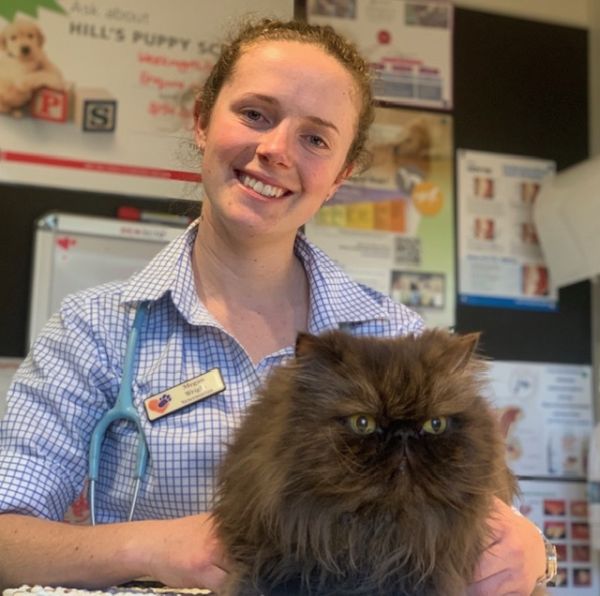 Farewell Megan, you will be missed. Best of luck for your veterinary career.
|
 |
 |
|
|
|
|
|
 |
 |
02 Are your heifers on target for joining? |
 |
 |
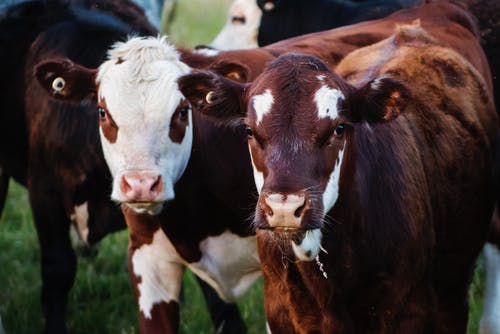 This is an important time of year to be considering spring joining. Whether you run beef or dairy, there are some common management ideas which are paramount to a successful joining: This is an important time of year to be considering spring joining. Whether you run beef or dairy, there are some common management ideas which are paramount to a successful joining:
Target mating weights
This is probably not a new concept to most of you, however many herds still experience poor heifer performance due to poorly grown heifers. Getting heifers to 55-65% of their mature body weight (360-420kg for 650kg mature weight cows) for joining will ensure they have reached sexual maturity. This will result in higher pregnancy rates at joining, reduced calving difficulty, better production, fertility and longevity compared to heifers which calve lighter.
Bovine Viral Diarrhoea Virus (BVDV or “Pestivirus”)
BVDV is an enormous impediment to the red meat industry. Similar goes for the dairy industry. Heifers are a critical control point of the disease, and it is paramount to detect and remove persistently infected animals before the joining period.
Manage parasites
Nearly all losses due to internal parasites occur in animals up to 2 years of age. To prevent production losses, heifers generally require 2-4 drenches between weaning and adulthood. It is ideal to guide drenching decisions based on knowing the worm species on your farm (larval differentiation) and the current burden your herd is experiencing (worm egg count). Internal parasites have a knock on effect to fertility as heifer growth rates slow with parasite burdens.
For specific advice on parasite control, please ask us.
|
 |
 |
|
 |
 |
03 Age at first calving - a major profit driver |
 |
 |
This article is written with the dairy industry in mind however the same principles apply in beef cattle operations.
Rearing heifers is an investment in the future of your farm. When assessing farm expenses, heifer rearing often accounts for 15-20% of the input costs of running a farm every year. The major variation to the amount you spend on rearing your heifers is their age at first calving.
So how do you reduce their age at first calving, whilst maintaining a healthy, productive and fertile heifer?
The major variable which contributes to the health, productivity and fertility of heifers is the rate at which they grow and their weight and frame size when they finally calve. For every 1kg heavier a heifer calves, you can expect another 7L of milk. Or for every 50kg extra, she will produce another 350L of milk in the following lactation. When multiplied over the total number of heifers you are calving a year, you can see this is a dramatic increase in production in your herd.
Well-grown heifers are more fertile at their initial joining, and also in the subsequent breeding once lactating. Poorly grown heifers experience a longer post partum anoestrus, and subsequently achieve lower 6 week in-calf rates than well grown heifers. This weight effect is illustrated in the graph below taken from Dairy Australia's InCalf study.
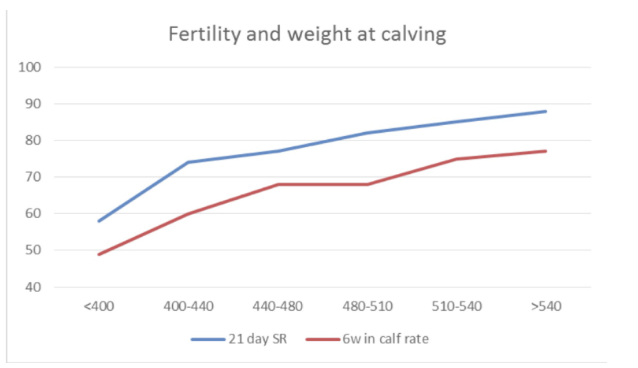
To know if your heifers are measuring up to their potential, here are some targets to consider:
- Heifers production is >85% of the cow production
- >85% of heifers make it through to a second lactation
- Heifers are 85-90% of the mature cow weight at calving
- 60% of heifers are back in calf by 100 days in milk
- Heifers calve ideally by 22 months and the majority are calved by 24 months
|
 |
 |
|
 |
 |
04 The 1:2:3 rule of foaling |
 |
 |
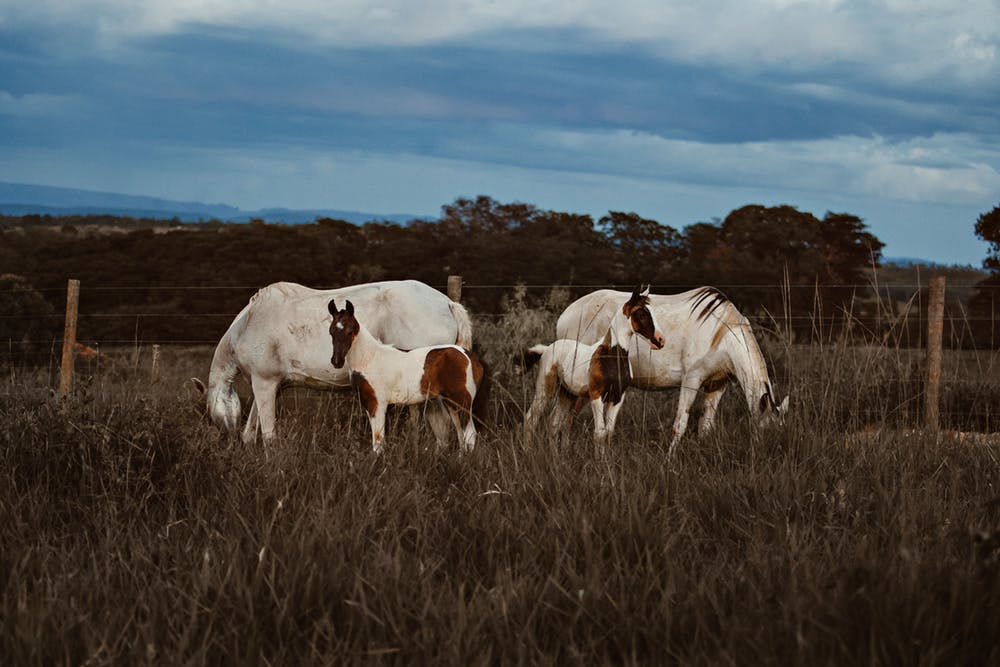 Foaling time can be fraught with danger for both mare and foal. The highest rate of neonatal deaths occurs in the first few days following birth, so it is a critical period. Preparation is key, as is being on the front foot for rapid problem recognition and intervention in those first 12-24 hours. Foaling time can be fraught with danger for both mare and foal. The highest rate of neonatal deaths occurs in the first few days following birth, so it is a critical period. Preparation is key, as is being on the front foot for rapid problem recognition and intervention in those first 12-24 hours.
After foaling, both mare and foal should be assessed by a veterinarian. A post-foaling check involves assessment of the mare for any trauma or tears, bleeding, uterine infection, and udder health. The foal should be assessed for vitality, umbilical health, the presence of any hernias, congenital conditions or limb deformities. The foal’s blood IgG levels should be tested to determine whether colostrum quality and intake has been adequate. Foals with low IgG levels at 12-24 hours of age are more susceptible to infection, and should receive an IV plasma transfusion using commercially available frozen plasma rich in immunoglobulins.
The 1:2:3 rule
1. Within 1 hour, the foal should stand
2. Within 2 hours, the foal should suckle
3. Within 3 hours, the mare’s placenta should be passed
If any part of the 1:2:3 rule is not satisfied, you should contact your vet immediately.
|
 |
 |
|
|
|
 |
 |
06 Feeding horses during dry times |
 |
 |
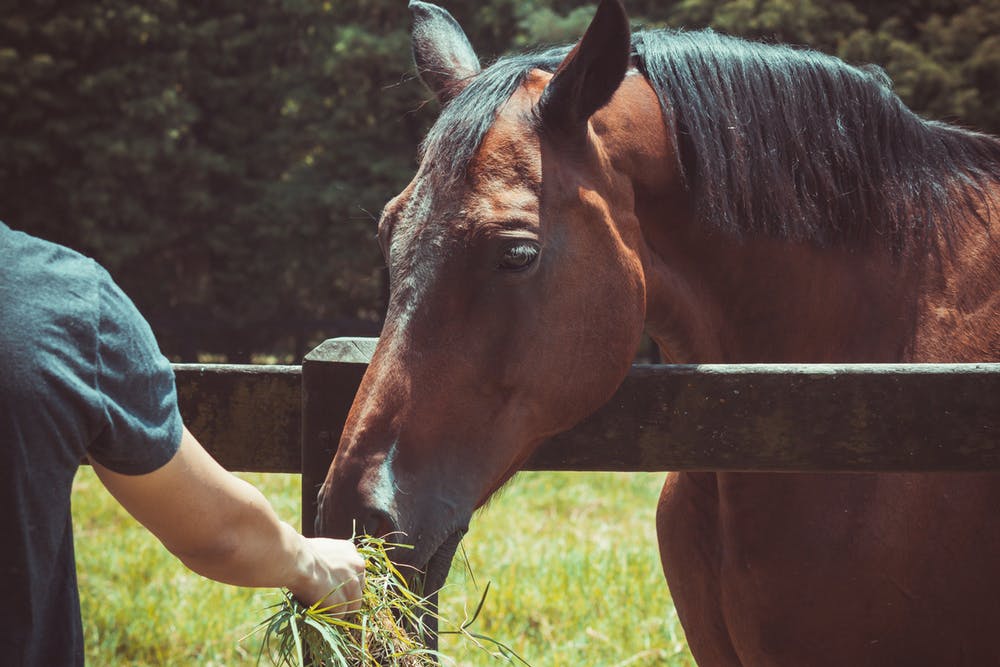 When facing drought and the flow on effect of feed availability being affected, the two main factors to consider are water and roughage. Horses will consume around 25-30 litres of water each day, more if a horse is in work or is pregnant and lactating. Horses on a predominantly dry roughage diet will usually drink more than horses on lush green feed, which has a significantly higher water content. When facing drought and the flow on effect of feed availability being affected, the two main factors to consider are water and roughage. Horses will consume around 25-30 litres of water each day, more if a horse is in work or is pregnant and lactating. Horses on a predominantly dry roughage diet will usually drink more than horses on lush green feed, which has a significantly higher water content.
Roughages, which include hay and pasture, are the most important component of a horse’s diet, providing essential sources of digestible energy, protein, and some vitamins and minerals. Roughages are high in fibre (>18% fibre), and fibre is required for normal digestive function. Roughage should be fed at 1.5-2% of the horse’s body weight per day.
During droughts horse owners often depend on hay as a roughage source. However drought conditions often result in a lack of availability of hay, a reduction in hay quality, and an increase in the cost of hay. Alternative high fibre feeds that may be utilised to reduce (but not replace) hay requirements include feedstuffs such as chaff, straw, soy hulls and beet pulp.
In addition to roughage, concentrates such as grain can be incorporated to increase the energy content of the diet. This is particularly important for horses with higher nutritional demands such as those in work, pregnant, lactating, or growing.
Take home messages:
- Ensure horses have free access to good quality water
- High-fibre roughages should make up the majority of the horse’s diet
- Aim to feed roughage at 1.5-2% of body weight per day
- Consider partial substitution of hay with alternative high fibre feeds
- Add in concentrates to increase dietary energy
- Make dietary changes gradually over 1-2 weeks
- Monitor body condition on a weekly basis
|
 |
 |
|
 |
 |
07 Leptospirosis: an occupational hazard you need to manage |
 |
 |
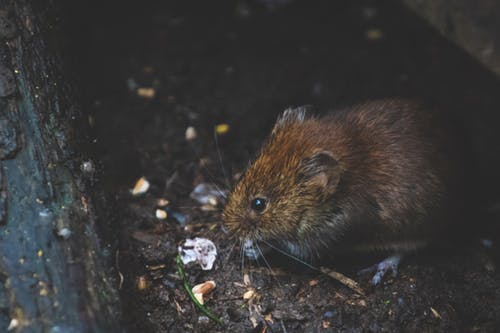 Leptospirosis is a contagious disease which infects both animals and humans. It is an occupational hazard for all people working with livestock (farmers, vets, abattoir workers etc). When humans are infected, it causes severe illness in some cases. Leptospirosis is a contagious disease which infects both animals and humans. It is an occupational hazard for all people working with livestock (farmers, vets, abattoir workers etc). When humans are infected, it causes severe illness in some cases.
The bacteria take residence in the kidneys of infected animals, and the reproductive tracts of females. The bacteria are then shed in the urine. This makes dairy workers particularly at risk due to the risk of splashing urine while milking cows. Like most bugs, they can live in the host (for example a cows) kidneys without doing any damage. These apparently healthy carriers are the main source of infection for other cattle as well as humans.
How do you go about managing the risk?
Under occupational health and safety regulations, it is required that farmers provide a safe environment for their employees. This requires steps be taken to minimise the risk of leptospirosis being contracted by all staff on farm.
How is this done?
- The most effective way of protecting humans is to vaccinate cows regularly. Even if cows harbour the bacteria, it reduces shedding of the bacteria dramatically.
- Always wear waterproof gloves, aprons and boots while milking.
- Be especially careful handling aborted material.
- In dairy sheds, use splash guards, cover drains and move away from urinating animals.
- Keep children away from dairy sheds, or provide them with a safe area where they are not likely to come in contact with urine.
- Always wash thoroughly after handling cattle, before eating, drinking or smoking.
- Drain or fence off low laying, swampy areas.
- Control rodents and feral pigs.
|
 |
 |
|
|
